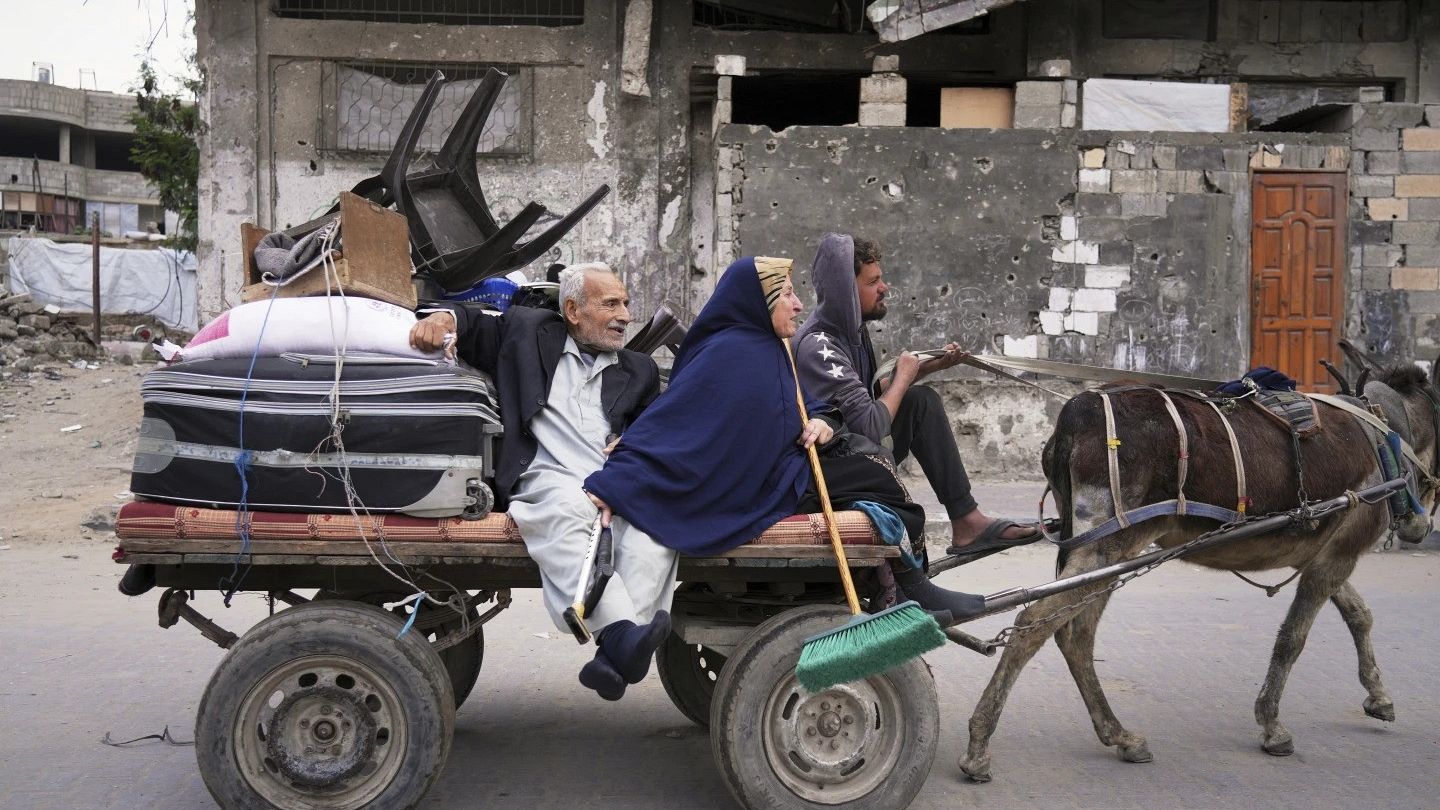What is the Morag Corridor that Israel has called "completed," and what is its purpose?
The separation of Rafah at the southernmost point and Khan Younis further north through this corridor is seen as part of the plan to implement the proposal to remove Palestinians from the Gaza Strip.
The Israel Defense Forces (IDF) announced on Saturday that it has completed the construction of the new Morag Corridor, which separates Rafah from the rest of the Gaza Strip. This corridor further confines Palestinians into increasingly shrinking pieces of land while airstrikes continue across the region. In a statement from the Israeli army, it was expressed that the army had "completed the siege of Rafah" after ordering the evacuation of its forces. Following signals that the Israeli army might soon launch a major ground operation, Israeli soldiers from the 36th Division had been deployed to the Jewish settlement of Morag, which was once located between Rafah and Khan Younis. The Israeli Defense Minister warned Palestinians on Saturday that the army would "expand violently" into other areas of Gaza, calling for the "removal of Hamas" and the release of hostages. Last month, Israel had broken a ceasefire in Gaza with a surprise bombardment after trying to pressure Hamas to accept new conditions for a ceasefire that came into effect in January. Is this a way to remove Palestinians from the region? Netanyahu also stated that Palestinians wishing to "voluntarily" relocate to other countries could do so with the support of the U.S. Recently, U.S. President Donald Trump and Netanyahu have been expressing their desire to send Palestinians to Egypt and other countries more frequently. Trump even drew criticism by saying he wanted to turn Gaza into a vacation resort. Palestinians vehemently reject these "proposals" and express their determination to stay in their homeland. The separation of Rafah at the southernmost point and Khan Younis further north through this corridor is seen as part of the plan to implement the proposal to remove Palestinians from the Gaza Strip. The Second Philadelphia Corridor Netanyahu argues that Morag will be "a second Philadelphia Corridor." The Philadelphia Corridor, named by Israel, is a narrow strip of land extending 14 km along the border between the Gaza Strip and Egypt. After Israel's withdrawal from the Gaza Strip in 2005, the Philadelphia Agreement was made with Egypt, and this area was established. Egypt was allowed to deploy 750 border guards to patrol its side of the border. The Palestinian side of the border was under the Palestinian Authority until Hamas took control in 2007. However, in May, Israel took control of this area. Additionally, according to the terms of the ceasefire agreement signed in January, Israeli forces were supposed to withdraw from the Philadelphia Corridor at the end of the first phase, but Israel did not comply with this provision. "We are dividing the strip" Prime Minister Netanyahu stated in another announcement on Wednesday, "We shifted gears in the Gaza Strip last night. [The Israeli army] is seizing territory, hitting terrorists, and destroying infrastructure," he said. "We are doing one more thing. We are taking control of the 'Morag route.' This will be the second Philadelphia route. Right now, we are dividing the strip, applying pressure step by step, so that our hostages will be given to us." According to the Israeli human rights group Gisha, since the war began in October 2023, the IDF has seized buffer zones totaling 62 square kilometers along the edges of the strip, which actually covers 17% of the strip. Maps published by Israeli media show that the corridor stretches from the east to the west of the narrow coastal strip. Israel has also rapidly reestablished control over the Netzarim corridor, which separates the northern third of Gaza from the rest of the strip. The Philadelphia and Netzarim corridors stretch from the Israeli border to the Mediterranean Sea. The name "Morag" used by Netanyahu was an illegal Israeli settlement established in the region between 1972 and 2005. More than 50,000 Palestinians have lost their lives The conflict between Israel and Hamas, which governs the Gaza Strip, flared up again on October 7. Hamas militants, who crossed the Israeli border in a raid, killed approximately 1,200 people, mostly civilians, in their attack and took around 250 people hostage. About half of these hostages were released during a week-long ceasefire in November in exchange for Palestinian prisoners held by Israel. It is currently believed that more than 50 hostages are in Hamas's hands, but it is reported that a significant portion of them has also lost their lives. Despite the United Nations General Assembly's (UNGA) resolution calling for an immediate ceasefire, Israel has continued its attacks and civilian massacres against Gaza since Hamas's attack on October 7, facing international condemnation. According to health officials in Gaza, more than 50,000 Palestinians, including many women and children, have been killed in Israeli attacks in Gaza since October 7. Access to food, clean water, and medicine remains very difficult in many areas of devastated Gaza. Under a lawsuit opened by South Africa, Israel is being accused of genocide at the International Court of Justice.


